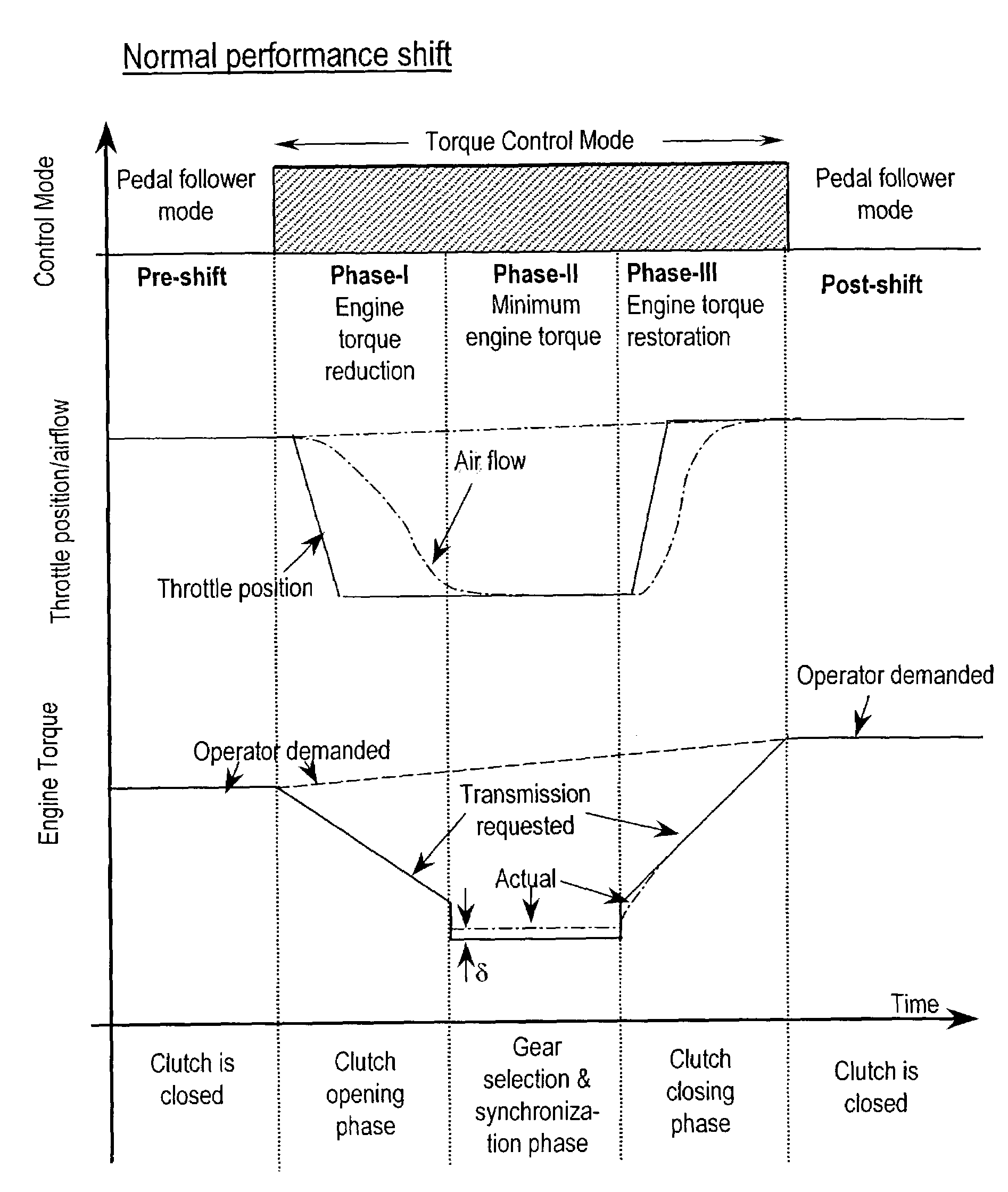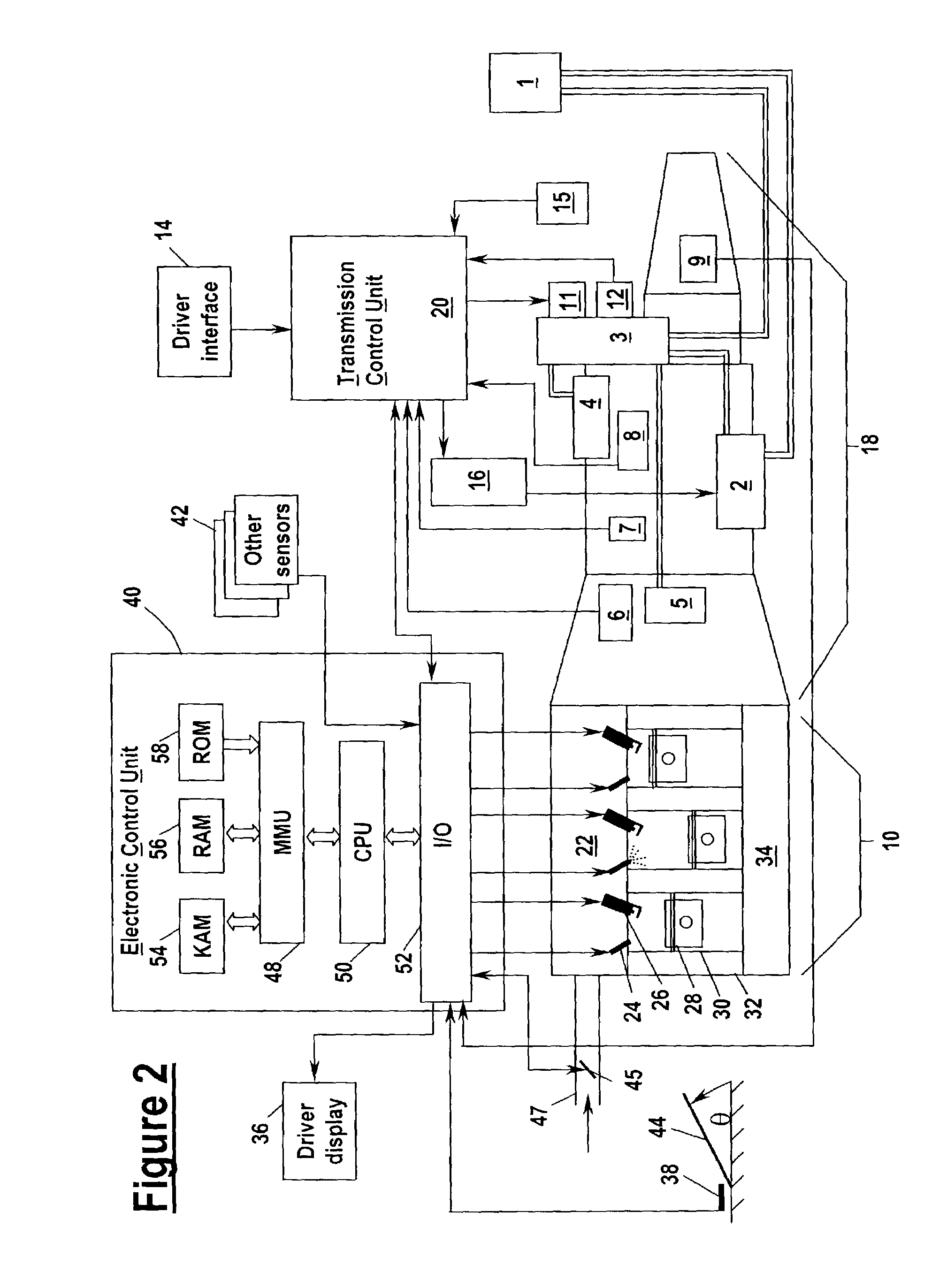Method for managing engine torque during a gear shift in an automatic shift manual transmission
a gear shift and manual transmission technology, applied in the direction of machines/engines, non-automatic control, electrical control, etc., can solve the problems of undesirable speed flare, insufficient torque authority provided by spark timing, engine is temporarily unable to provide operator-demanded torque, etc., to achieve the effect of torque reduction
- Summary
- Abstract
- Description
- Claims
- Application Information
AI Technical Summary
Benefits of technology
Problems solved by technology
Method used
Image
Examples
Embodiment Construction
[0033]Referring to FIG. 2, an engine 10 is shown coupled and an automatic shift manual (ASM) transmission 18. The ASM transmission 18 is hydraulically actuated. The hydraulic fluid reservoir 1 is connected by hydraulic lines to an electrically-actuated hydraulic pump 2 and shift actuator 3. Shift actuator 3 is connected by hydraulic lines to clutch actuator 5 (i.e., a clutch) and a pressure accumulator 4. Hydraulic pump 2 is coupled to transmission control unit (TCU) 20 via a pump relay 16. TCU 20 receives input from clutch position sensor 6, input shaft speed sensor 7, two gear position sensors 8, output shaft speed sensor 9, pressure sensor 12, driver interface 14, and crank interrupt relay 15. Transmission control unit 20 is coupled to an engine control unit (ECU) 40 by a computer area network (CAN) connection, or other protocol capable of transferring data between the two control units, e.g., hardwired or wireless. TCU 20 controls four solenoid valves 11 which direct high pressu...
PUM
 Login to View More
Login to View More Abstract
Description
Claims
Application Information
 Login to View More
Login to View More - R&D
- Intellectual Property
- Life Sciences
- Materials
- Tech Scout
- Unparalleled Data Quality
- Higher Quality Content
- 60% Fewer Hallucinations
Browse by: Latest US Patents, China's latest patents, Technical Efficacy Thesaurus, Application Domain, Technology Topic, Popular Technical Reports.
© 2025 PatSnap. All rights reserved.Legal|Privacy policy|Modern Slavery Act Transparency Statement|Sitemap|About US| Contact US: help@patsnap.com



